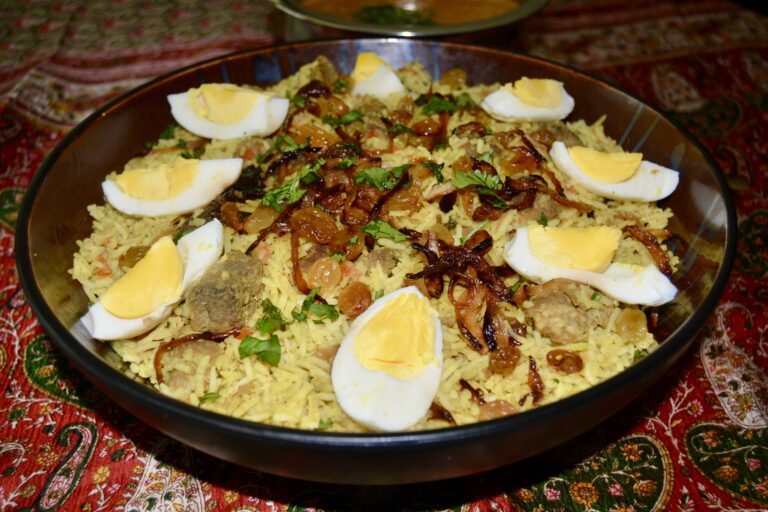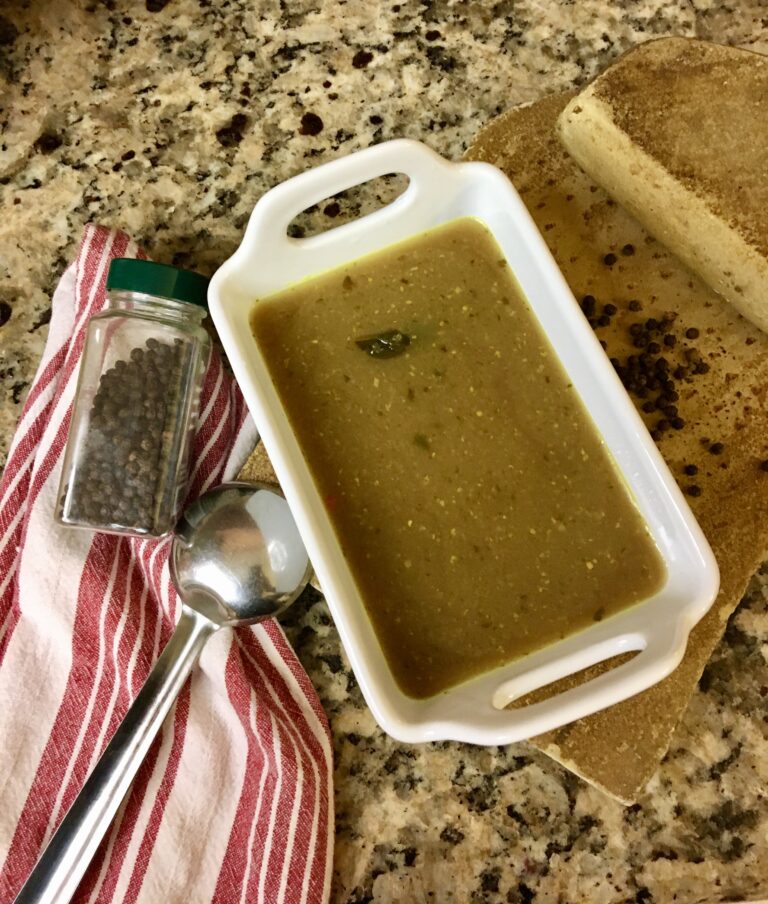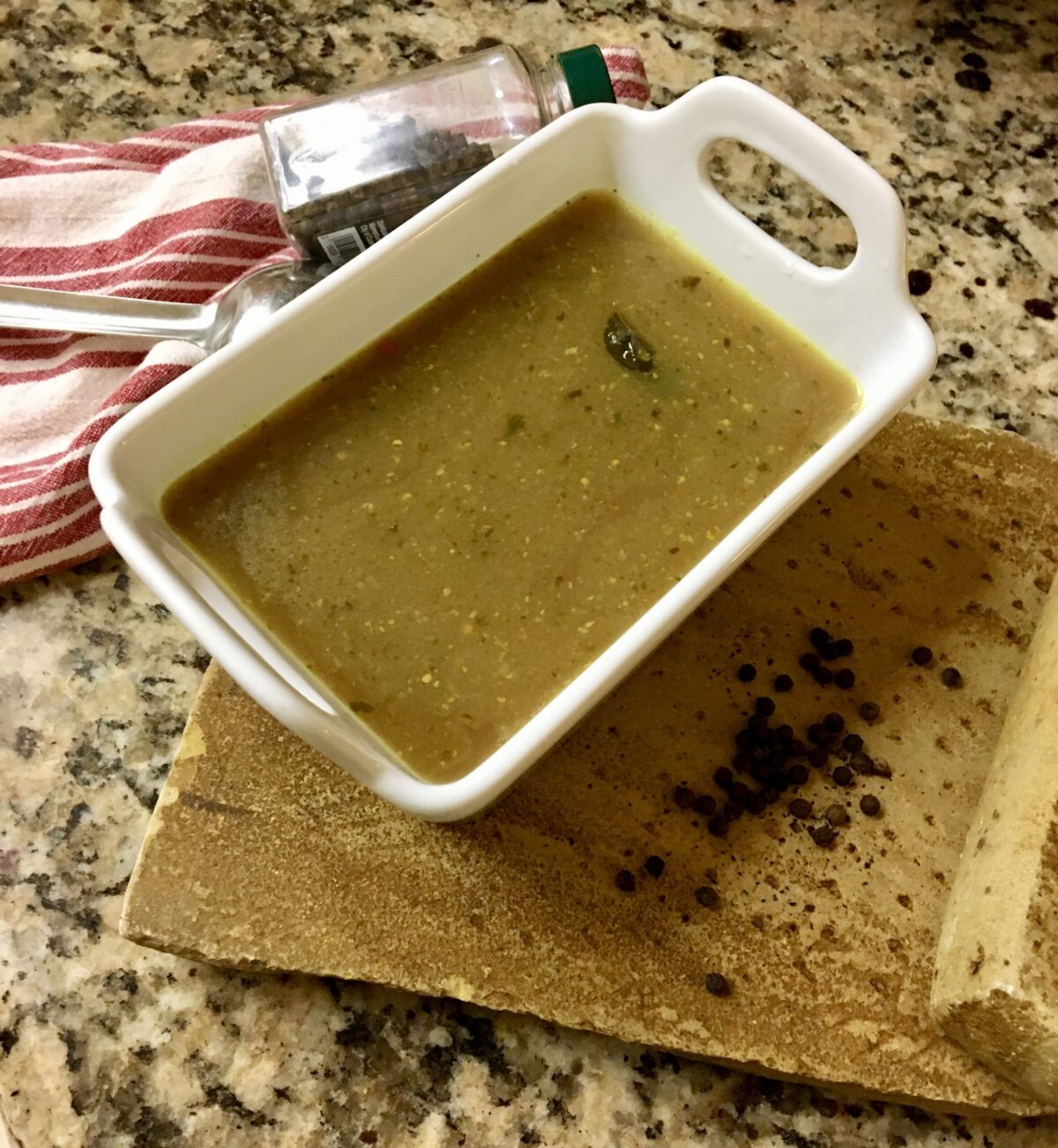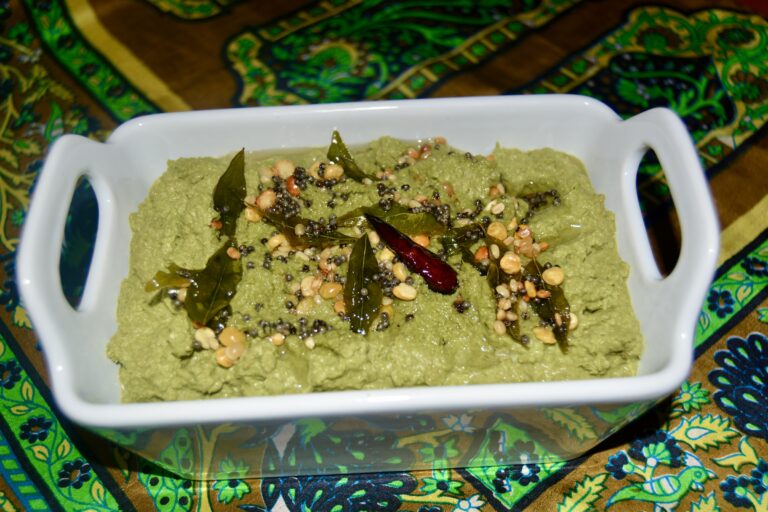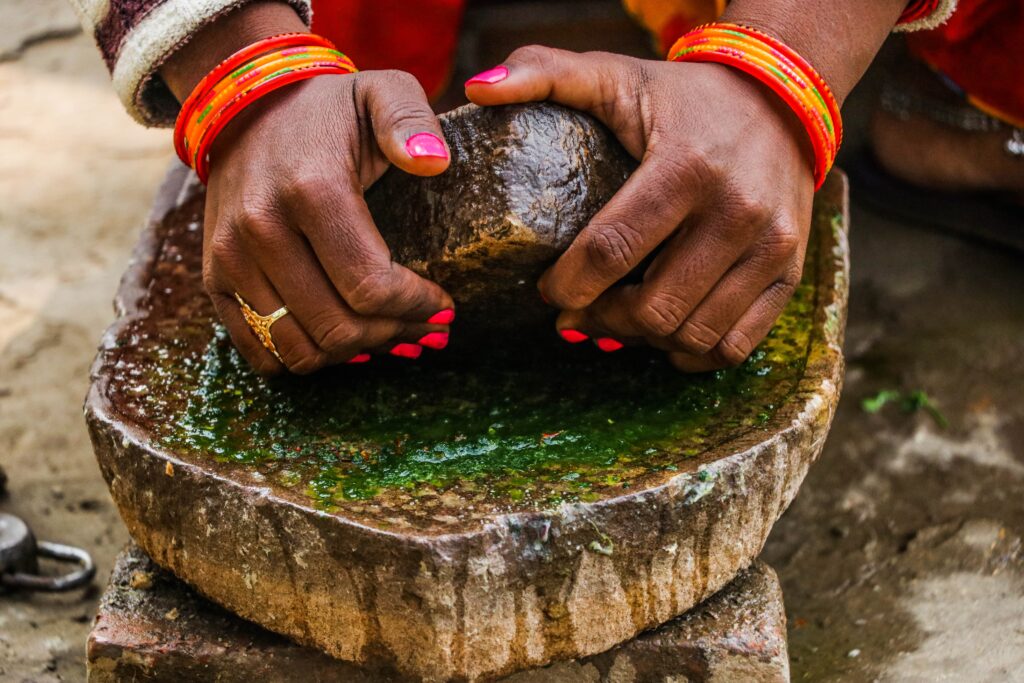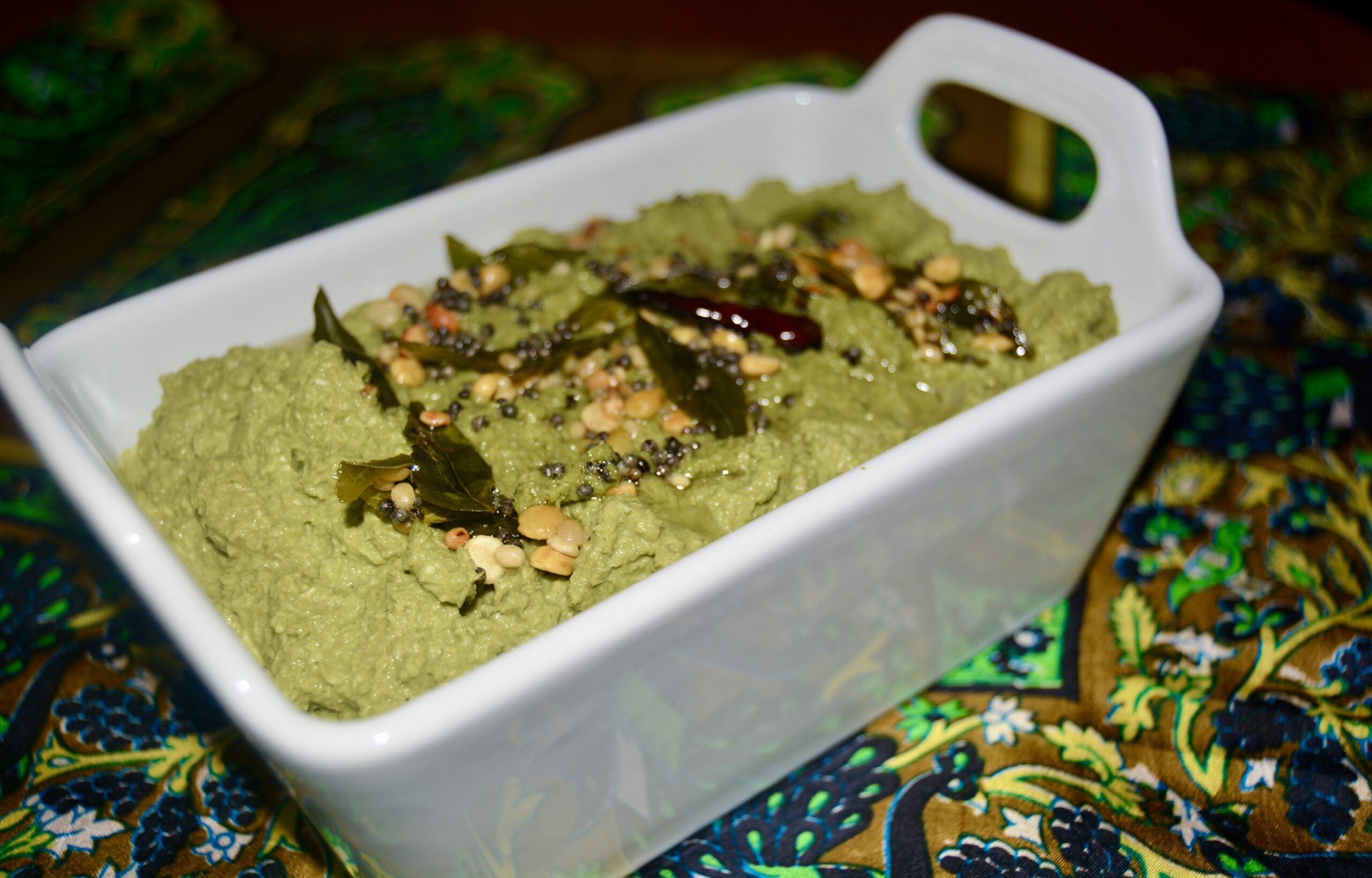I vaguely remember the first time I had Biryani. It was for a special celebration in Bangalore, South India at my grandparents’ home. I remember a houseful of mother’s relatives! For us kids, a large square Dari (cotton carpet) was spread on the floor. Fresh banana leaves, washed and cut into oblongs, were placed before us. Then the women in the family came around, serving us heaped spoons of Biryani. No utensils were provided, and we ate with our fingers (hands duly washed and using the tips of our fingers to scoop up the rice)! It was delicious! Mama always fixed it for New Year’s lunch with Channa Dal Curry and Raita. I continue the tradition when able!
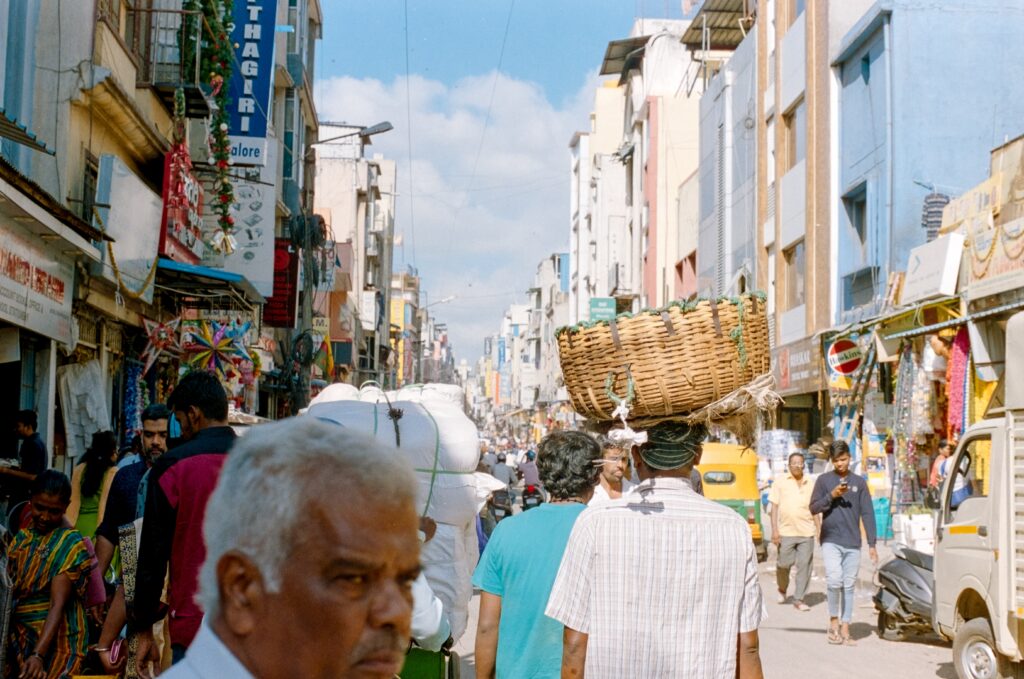
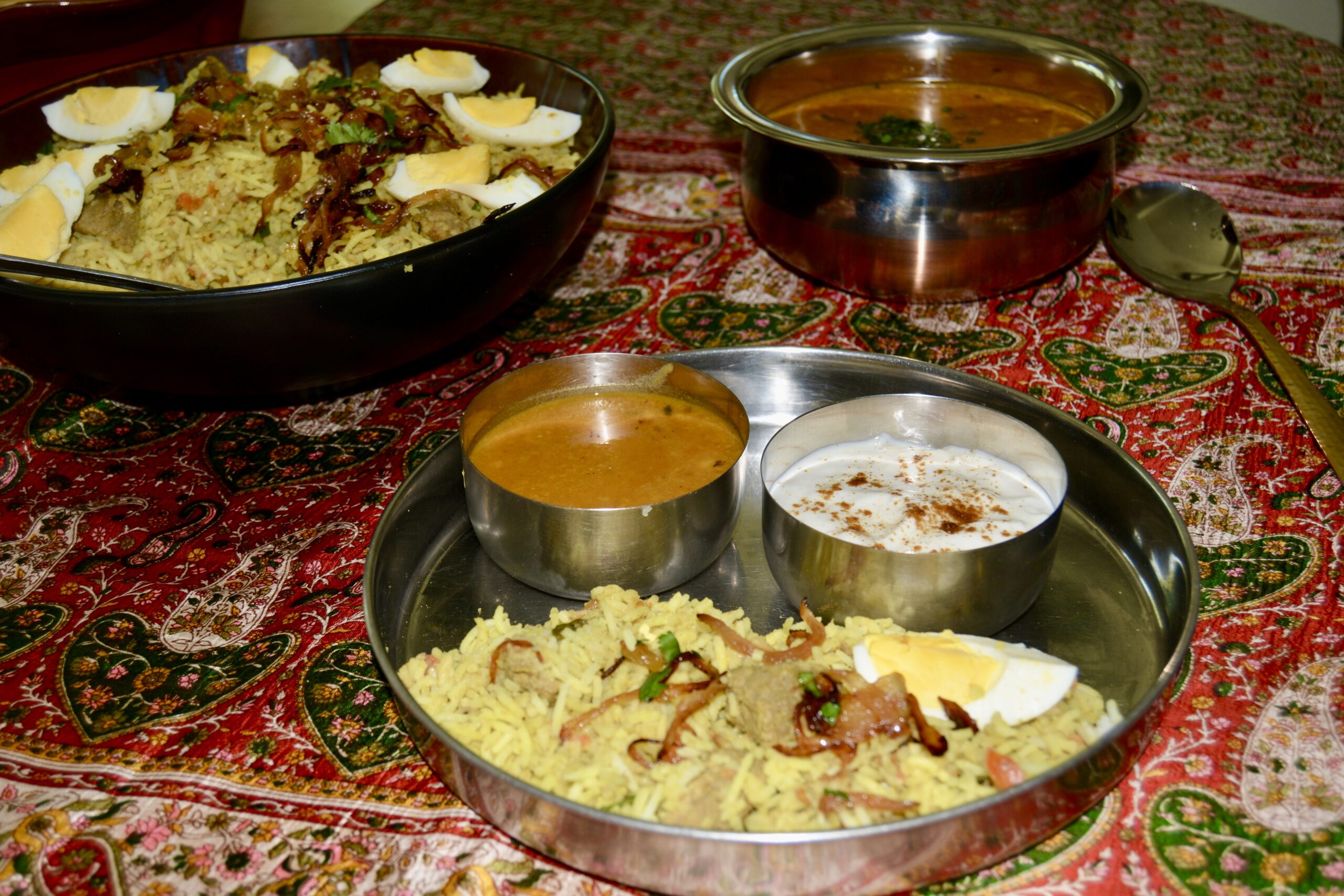
Mama's Biriyani
Ingredients
Masala for the Korma
- 3 tbsp ginger paste (freshly ground ginger and garlic are best)
- 2 tbsp garlic paste
- 1 bunch fresh green coriander (leaves only, remove stems—a bit of stem is okay)
- 3 tbsp coriander powder
- 1 tsp turmeric powder
- chili powder to taste
Other Ingredients
- 5 cups Basmati rice
- 3 lbs Meat (chicken or beef) (cleaned and set aside)
- ¾ cup oil (olive, vegetable, or coconut oil)
- 4-5 large onions
- 2 fine Serrano chilies (whole, washed and almost slit in half)
- 4 cinnamon sticks
- 4 black cardamom (large)
- 6 green cardamom (small)
- 6 cloves
- 4 tomatoes (finely chopped)
- 1 tbsp poppy seeds (ground smooth, optional)
- 1 cup yogurt (whisked smooth)
- 1 can coconut milk (or the fleshy, white part of 1 fresh coconut ground smooth the poppy seed)
- 2 tbsp mint leaves (finely chopped)
- salt to taste
- 2 limes (juice only)
- 2 cups peas and carrots
- cashews and raisins (for garnish)
Instructions
To Prepare
- Gather all the ingredients before you start. Wash and soak the 5 cups of rice for 15 minutes before you drain it.
- Heat ¾ cup of oil. You need extra when you make biryani.
- Add the cinnamon, cardamom, and cloves. Add cut onions and slit green chilies. When half fried (about 10 mins) add meat and salt to taste. Cook in its own juice for about 10-15 minutes until the meat is no longer pink.
- Add the ground ginger, garlic, spice powders, and green coriander. Fry until the masala is done. That is, until the water has evaporated and the oil starts to surface at the bottom of the pan. It takes about 10-15 mins.
- Now add enough water to cover and cook the meat until three-quarters cooked. (You can use a pressure cooker if you like but make sure the meat is not overcooked). When the meat is three-quarters cooked, and the oil starts to surface on top, remove the pan from the stove. Drain out the excess oil into a measuring cup or bowl. Set aside.
- Put the meat back on the stove. Add the beaten yogurt, tomatoes, coconut, and cook until you have a nice thick gravy, about 10-15 minutes. Remove from stove.
- To the excess oil you set aside, add the finely cut mint and juice of the lime. Set aside.
For the Rice
- Boil 10 cups of water (two cups water to one cup rice). When the water comes to a boil, pour the rice into the boiling water, and add the salt.
- Add the peas and carrots, if desired.
- When the is almost cooked, drain off all the water. (To test if the rice is almost cooked, remove a few grains and press on them between your finger tips. Most of it will feel soft, but should still feel grainy).
To Cook the Biriyani
- Turn oven on to 250°.
- In a large roasting pan or oven-safe pot, place a layer of rice, then a layer of the korma curry. Continue in this fashion until the korma is used. The last layer should be the rice. Now drizzle the oil, lime, and mint mixture all over the rice. Cover the dish and cook in oven for 20 minutes.
- Pull the roaster out of the oven, uncover, and with a fork gently toss the rice so it is blended well. Test if the rice is completely cooked. If it still feels grainy, then reduce turn the oven to 200° degrees and cook the rice until it is done.
Notes
Streets of Bangalore Photo by Andrea Leopardi on Unsplash

